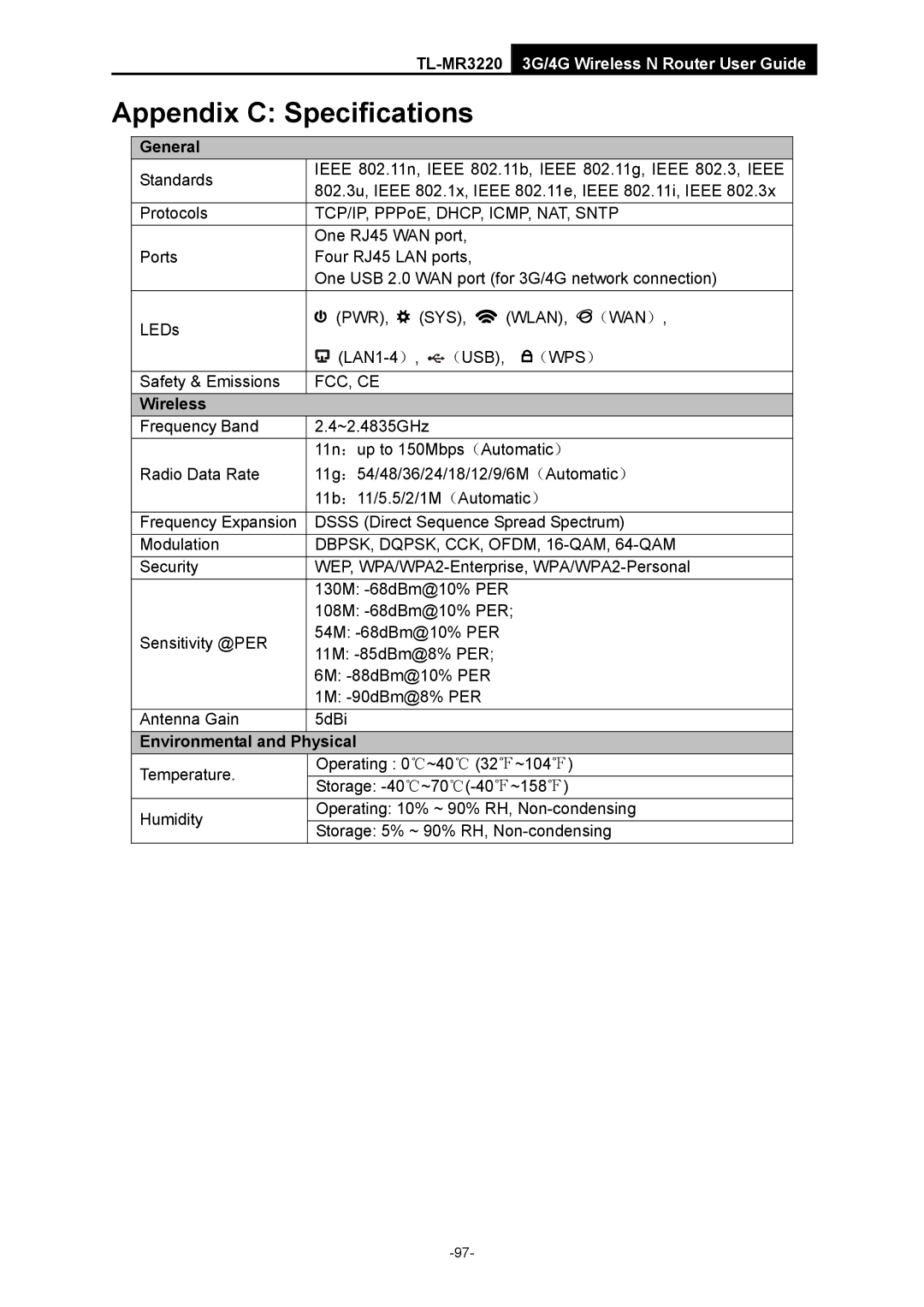
TL-MR3220 3G/4G Wireless N Router User Guide
IEEE 802.11n, IEEE 802.11b, IEEE 802.11g, IEEE 802.3, IEEE 802.3u, IEEE 802.1x, IEEE 802.11e, IEEE 802.11i, IEEE 802.3x
TCP/IP, PPPoE, DHCP, ICMP, NAT, SNTP
One RJ45 WAN port,
Four RJ45 LAN ports,
One USB 2.0 WAN port (for 3G/4G network connection)
(PWR), ![]() (SYS),
(SYS), ![]() (WLAN),
(WLAN), ![]() (WAN),
(WAN),
|
| (USB), | (WPS) | |
| Safety & Emissions | FCC, CE |
|
|
| Wireless |
|
|
|
| Frequency Band | 2.4~2.4835GHz |
|
|
|
| 11n:up to 150Mbps(Automatic) | ||
| Radio Data Rate | 11g:54/48/36/24/18/12/9/6M(Automatic) | ||
|
| 11b:11/5.5/2/1M(Automatic) | ||
|
|
| ||
| Frequency Expansion | DSSS (Direct Sequence Spread Spectrum) | ||
| Modulation | DBPSK, DQPSK, CCK, OFDM, | ||
| Security | WEP, | ||
|
| 130M: |
| |
|
| 108M: |
| |
| Sensitivity @PER | 54M: |
| |
| 11M: |
| ||
|
|
| ||
|
| 6M: |
| |
|
| 1M: |
| |
| Antenna Gain | 5dBi |
|
|
| Environmental and | Physical |
|
|
| Temperature. | Operating : 0℃~40℃ (32℉~104℉) | ||
| Storage: | |||
|
| |||
| Humidity | Operating: 10% ~ 90% RH, | ||
| Storage: 5% ~ 90% RH, | |||
|
| |||
